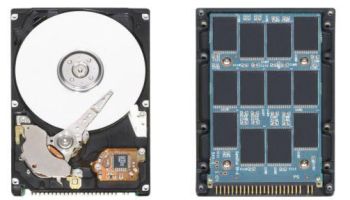A brand-new software company that deals strictly with the optimisation of NAND flash memory in enterprise servers made its debut on June 28. FlashSoft, styling itself as “The Flash Virtualisation Company”, launched its first product with the announcement of its Series A funding of $3 million from Thomvest Ventures.
FlashSoft SE, which essentially turns solid state disk (SSD) and PCIe flash into server-tier, read-write cache, enables flash disks to become more cost-effective computing resources, CEO Ted Sanford told eWEEK.
Uses Capacity Only for Hottest Data
 “We call it Tier Minus One,” he said. “It sits right beside the DRAM [dynamic random access memory]. The SSD itself would be tier 0, a SAS hard disk drive would be tier 1, and a SATA hard drive would be tier 2.”
“We call it Tier Minus One,” he said. “It sits right beside the DRAM [dynamic random access memory]. The SSD itself would be tier 0, a SAS hard disk drive would be tier 1, and a SATA hard drive would be tier 2.”
FlashSoft SE, using algorithms that identify the hottest data items and moving them to Tier Minus One where they are readily available for use, can turn 100MB of NAND flash into the equivalent of 1GB of flash, Sanford said.
Using this new software, an IT shop can provide databases, applications and virtual machine environments with the performance benefit of having the entire data set on flash, with only a fraction of the data actually stored in flash, Sanford said. This makes enterprise flash, normally a much more expensive storage medium, much more cost-effective as it works with existing storage infrastructure.
FlashSoft contends that only 15 percent to 20 percent of business data should be considered “hot” data that needs to be kept on a Tier Minus One or Tier 0 flash disk. That is a major part of how FlashSoft works; it identifies hot data quickly by file type on its own, without needing human intervention.
Flash SSDs have always been known for high performance but they have two inherent integration problems with standard hard-disk-based servers, Sanford said.
“First, when used as primary data storage, flash memory cannot easily integrate with and leverage the benefits of existing storage systems infrastructure,” Sanford said. “Secondly, storing all of an application’s data on server-attached flash memory remains expensive. FlashSoft solves both of these.”
In fact, Sanford said, FlashSoft actually reduces the processing burden on storage within a standalone server, across server clusters, and throughout the data center because of the way it filters and stores only the most important data.
Sanford said the company is busy building a new technical community.
FlashSoft was founded by an experienced team from companies that include Veritas (now Symantec), Oracle and Symantec. Managing director Don Butler of Thomvest Ventures will join the FlashSoft board of directors, Sanford said.




